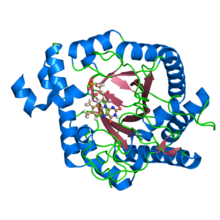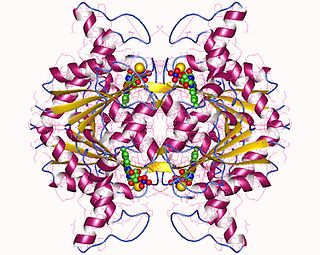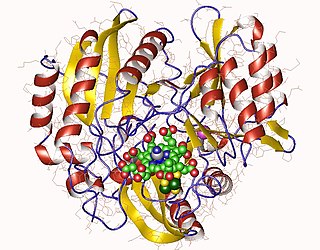| NADPH dehydrogenase | |||||||||
|---|---|---|---|---|---|---|---|---|---|
 | |||||||||
| Identifiers | |||||||||
| EC no. | 1.6.99.1 | ||||||||
| CAS no. | 9001-68-7 | ||||||||
| Databases | |||||||||
| IntEnz | IntEnz view | ||||||||
| BRENDA | BRENDA entry | ||||||||
| ExPASy | NiceZyme view | ||||||||
| KEGG | KEGG entry | ||||||||
| MetaCyc | metabolic pathway | ||||||||
| PRIAM | profile | ||||||||
| PDB structures | RCSB PDB PDBe PDBsum | ||||||||
| Gene Ontology | AmiGO / QuickGO | ||||||||
| |||||||||
In enzymology, a NADPH dehydrogenase (EC 1.6.99.1) is an enzyme that catalyzes the chemical reaction
Contents
- NADPH + H+ + acceptor NADP+ + reduced acceptor
The 3 substrates of this enzyme are NADPH, H+, and acceptor, whereas its two products are NADP+ and reduced acceptor.
This enzyme belongs to the family of oxidoreductases, specifically those acting on NADH or NADPH with other acceptors. It has 2 cofactors: FAD, and FMN.






